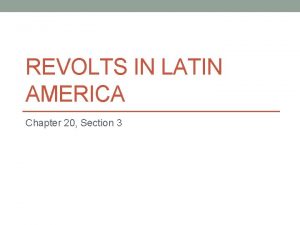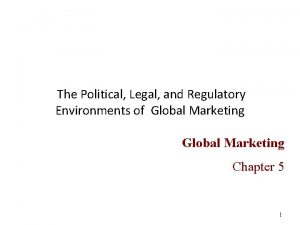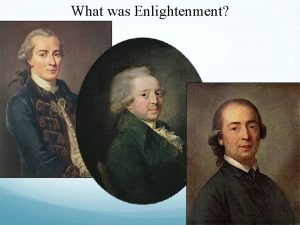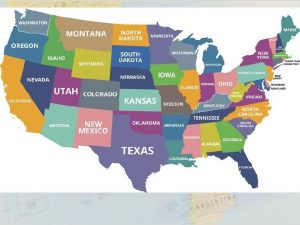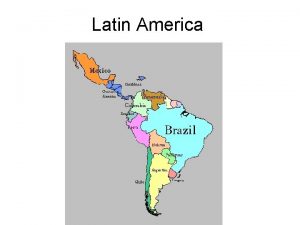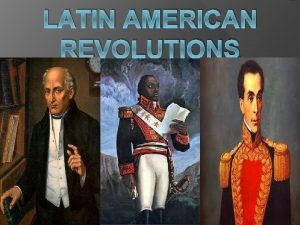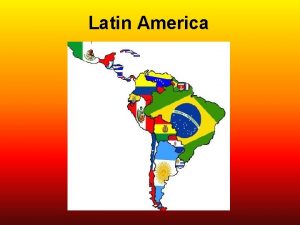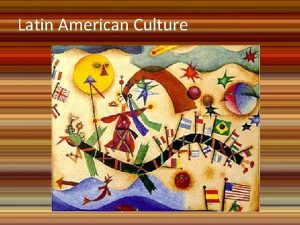1804 1914 What Caused Discontent in Latin America













- Slides: 13

1804 -1914

What Caused Discontent in Latin America? By the late 1700 s, the revolutionary spirit that gripped Western Europe had spread to Latin America. There, discontent was rooted in the social, racial and political system that had emerged throughout 300 years of Spanish rule. The Spanish empire was divided into viceroyalties by the late 18 th century and by that point there was unrest in each entity. The resulting racial hierarchy: Peninsulares (born of Spanish parents in Spain) Creoles Mesitzos/Mulattoes (mixed European and native/African) Native Americans (indigenous to area) Enslaved Africans (imported from West Africa) (born of Spanish parents in the Americas)

Spanish Caste System PENISULARES had most wealth, education and status CREOLES resented their second-class status MESTIZOS/MULATTOES were angry at being denied status/power of whites NATIVE AMERICANS suffered economic misery under Spanish ENSLAVED AFRICANS longed for freedom

The Colonial Economy While silver brought increased revenues to the Spanish crown in royalties, taxes and trade - as well as stimulated the colonies’ commerce – the majority of Spanish America was involved in farming. Wealthy used poorly paid mestizos, mulattoes or African slaves to work their large plantations Many Native Americans farmed their communal lands Agricultural exports rose throughout 1700 s and brought wealth to areas that didn’t have gold/silver (Rio de la Plata)

Spanish Colonial Government King of Spain (absolute power) Spanish nobles ruled over Viceroyalities Creole elites helped govern Viceroyalities

Spanish Viceroyalties

The Catholic Church Missionaries and priests of the Catholic Church arrived in the Americas with the conquistadores, and the church quickly became the most important institution after the government. Missionaries converted Native Americas The church possessed huge wealth in the colonies (owned 50% of real estate in New Spain) – was the largest source of investment capital in the colonies Provided Exerted education and social services control over the way people thought and acted (enforced orthodoxy in spiritual/secular issues)

By 1750… The Spanish colonies were prospering extensive trade with each other and other countries Spain itself had declined in economic and military power (unsuccessful wars) and needed the colonies (bullion) more than the colonies needed Spain. Colonial Most administration was lax, corrupt positions (except viceroy) were easily bought by wealthy Creoles – this brought about a decline in Spain’s influence

Bourbon Reforms In the 18 th century, Spain’s Hapsburg monarchy was replaced by the Bourbons. They wanted to modernize Spain’s economy, society and political institutions Jose de Galvez (under rule of Charles III) was sent to Mexico to check on colonies. Found corruption and disorganization, went back to Spain and became head of Council of Indies. Goal was to exploit the colonies more efficiently to get more money for Spain

Reforms included: appointing regional governors with more executive, judicial powers Replacing Creole officials with peninsulares Imposed royal monopolies on various products (tobacco, gunpowder, salt) Direct “free collection of taxes trade under the State’s protection” – mercantilism This did not work as well as Spain had hoped because, despite extensive reforms, the Spanish Empire remained a disjointed economy (instead of integration, rivalry was the norm).

Bourbon Reforms- Religious, Military and Racial Religious Reforms Believed that the church’s secular power should be restricted (education) and that its wealth should be transferred to the Crown or private individuals Many more clergy were expected to pay taxes than had in the past Jesuits were forced out of Spanish America (1767) and estates were taken by Crown Military Reforms relied on colonial militias (couldn’t afford large armies) and so the local economies bore the brunt of the expense Militia officers were given same privileges as Spanish military so many local Creole elites were eager for commissions Problems (resentment over draft, fear that local militias would be used against Spain)

Racial Issues The Bourbon policies sought to rid the empire of social tension by eliminating major forms of racial discrimination. Free blacks and mulattoes were allowed in the militias Some free blacks and mulattoes were allowed to receive an education, marry whites, hold public office and enter priesthood (1795) New slave law issues designed to improve the conditions of slave life and labor (enacted in 1789, repealed 1794 after Creole resistance) While new opportunities brought more Spaniards to America, their numbers were not high. Of 3. 2 million whites in Spanish America in 1800, less than 40, 000 were peninsulares. Many were closely connected with Creoles and merged together to form a white ruling class. But Creole resentment and resistance increased toward them. This was a major cause of the move for colonial independence.

Impact of Bourbon Reforms In terms of raising more revenue for Spain, the Bourbon reforms were successful. Mexican royal income increased from 3 million pesos in 1712 to 14 million pesos in 1800 But Spanish colonials of all ranks had reason for complaint, especially the Creoles. they felt like they were victims of a new colonization (a Spanish attack on their trade, office and wealth) This created a climate of resentment and weakened the Spanish Crown’s authority, which they had been designed to strengthened
 Discontent in latin america worksheet answers
Discontent in latin america worksheet answers Why is called latin america
Why is called latin america Kant 1724 a 1804
Kant 1724 a 1804 Civil code of 1804
Civil code of 1804 Da form 3644
Da form 3644 Desarrollo integral que es
Desarrollo integral que es Immanuel kant 1724 a 1804 nascido em
Immanuel kant 1724 a 1804 nascido em Kant
Kant Immanuel kant 1724 1804
Immanuel kant 1724 1804 Rap of the map of the us
Rap of the map of the us Europe asia north america south america
Europe asia north america south america Whats an onomatopeia
Whats an onomatopeia Happening e performance
Happening e performance Physical features latin america
Physical features latin america
